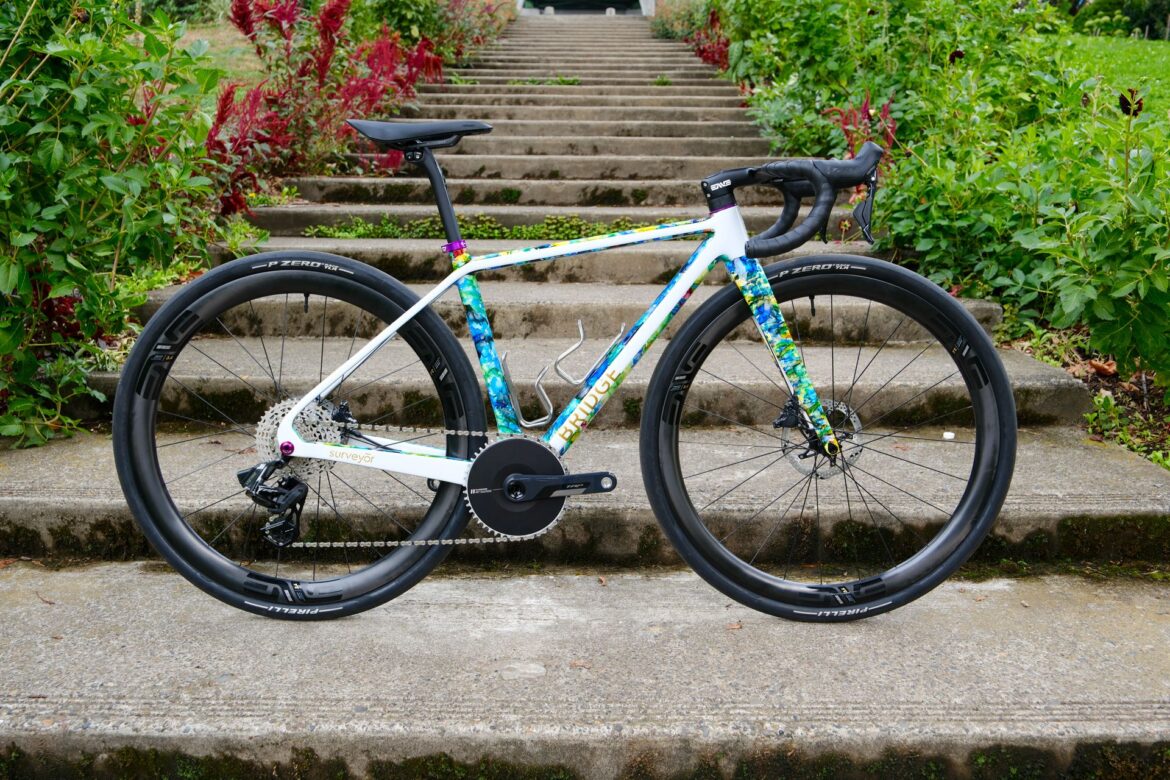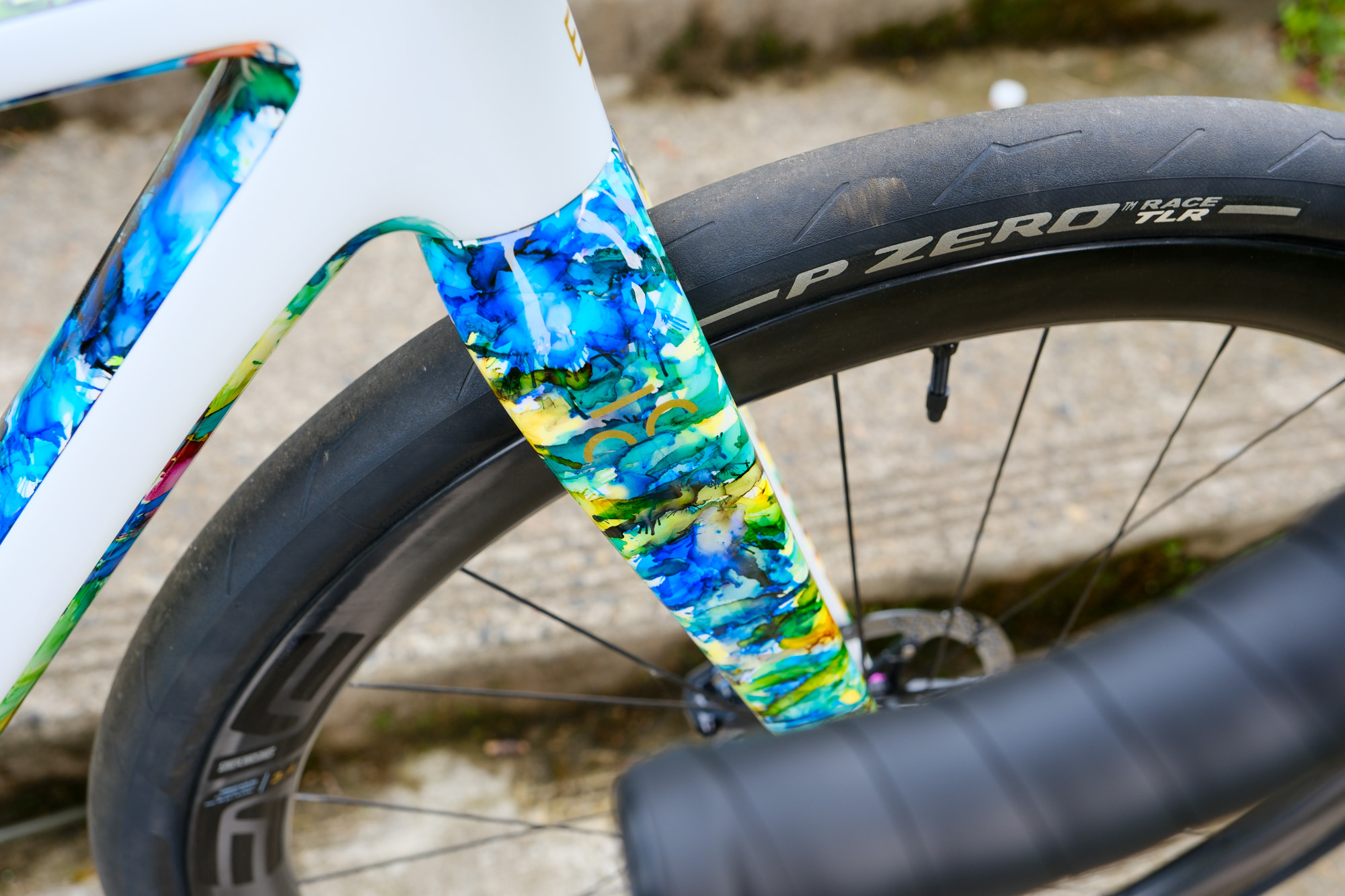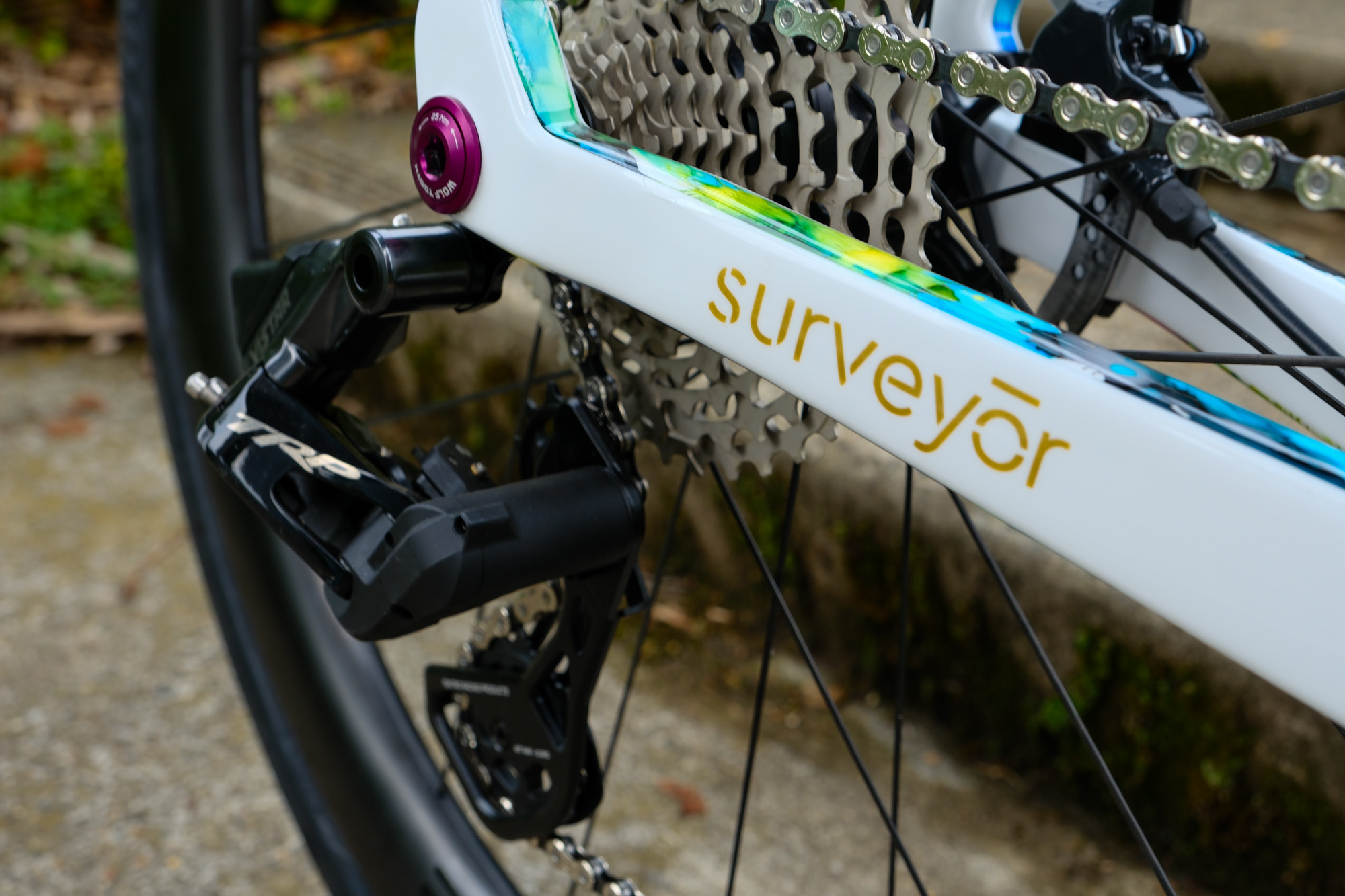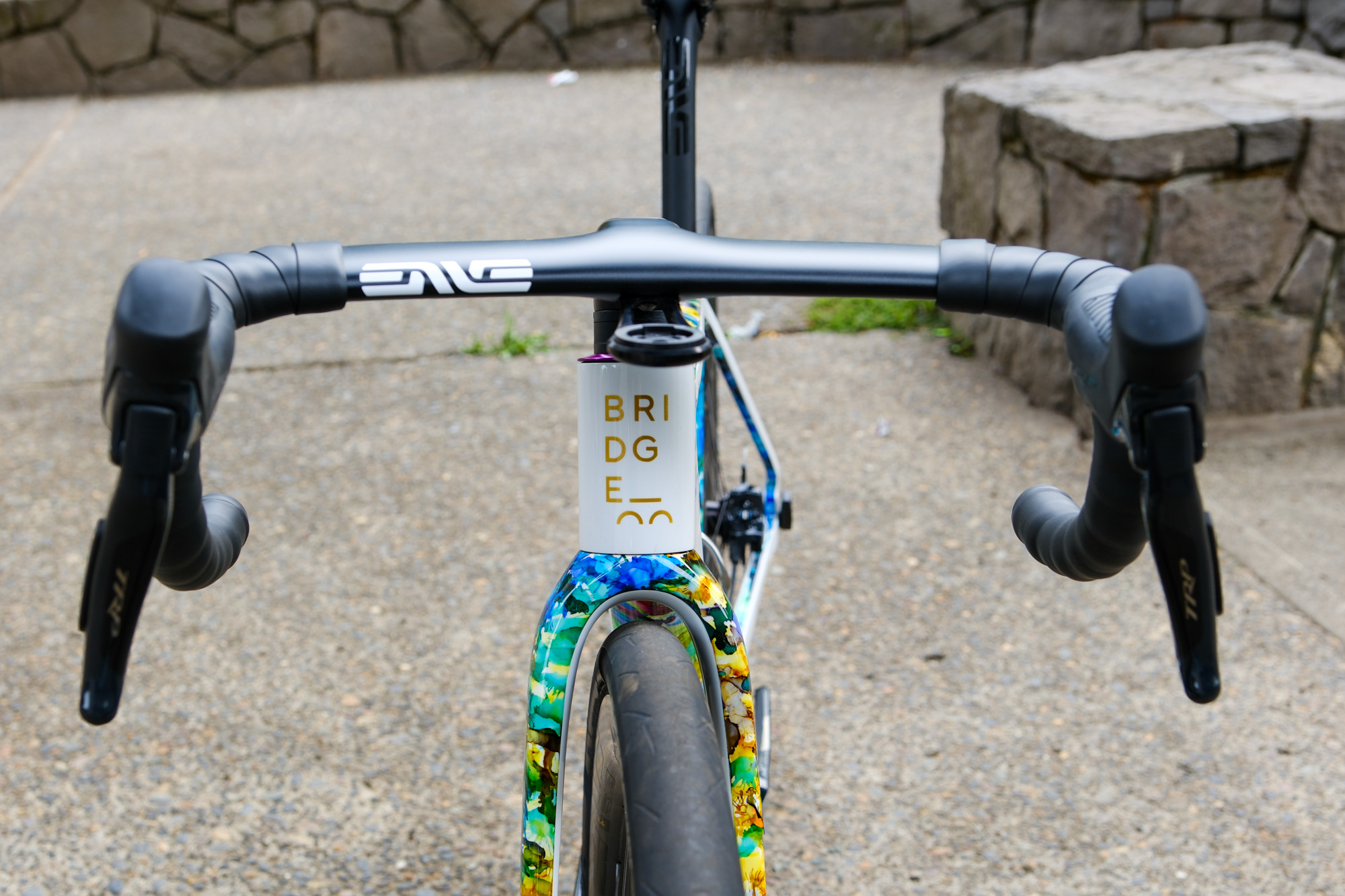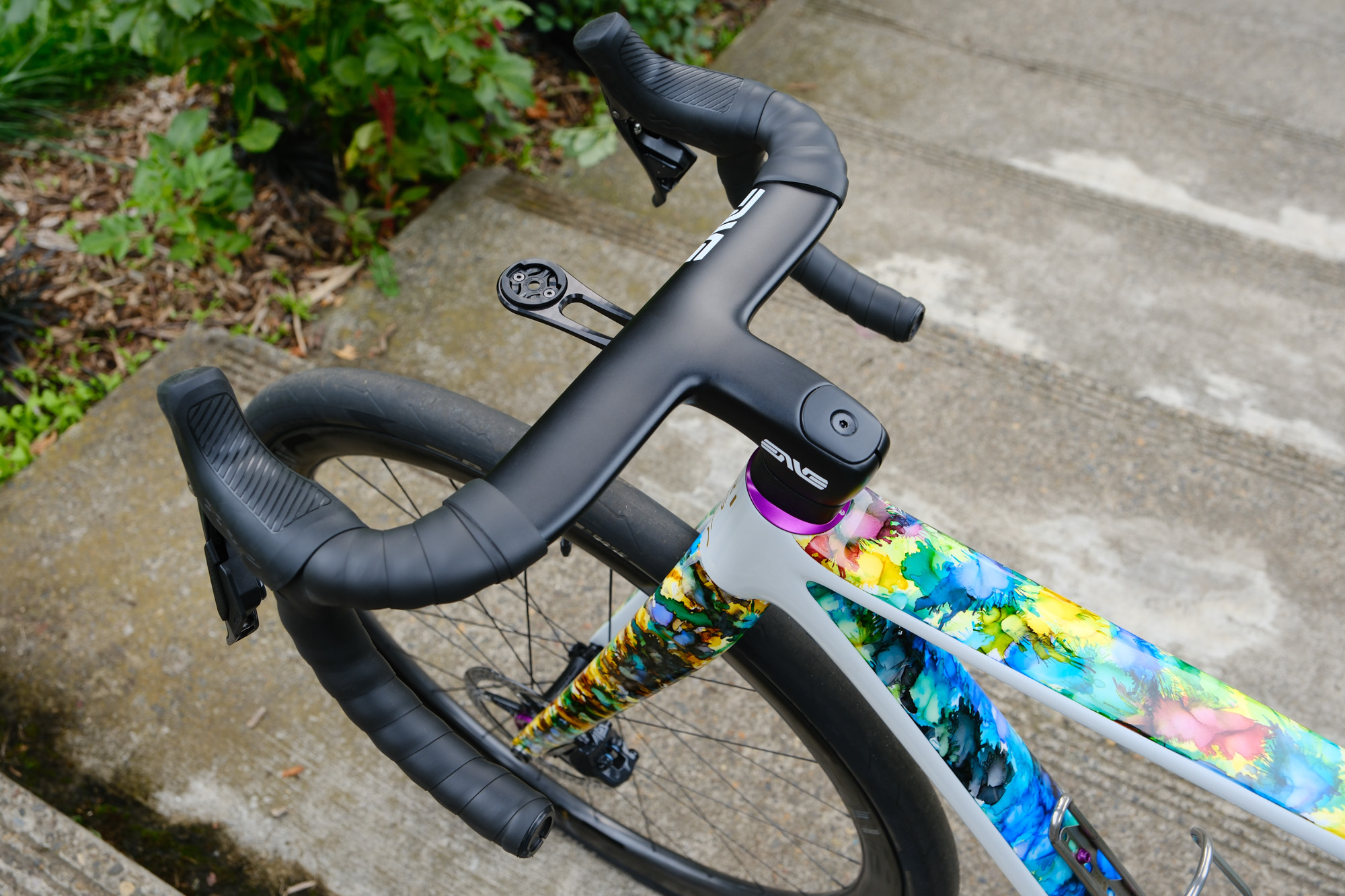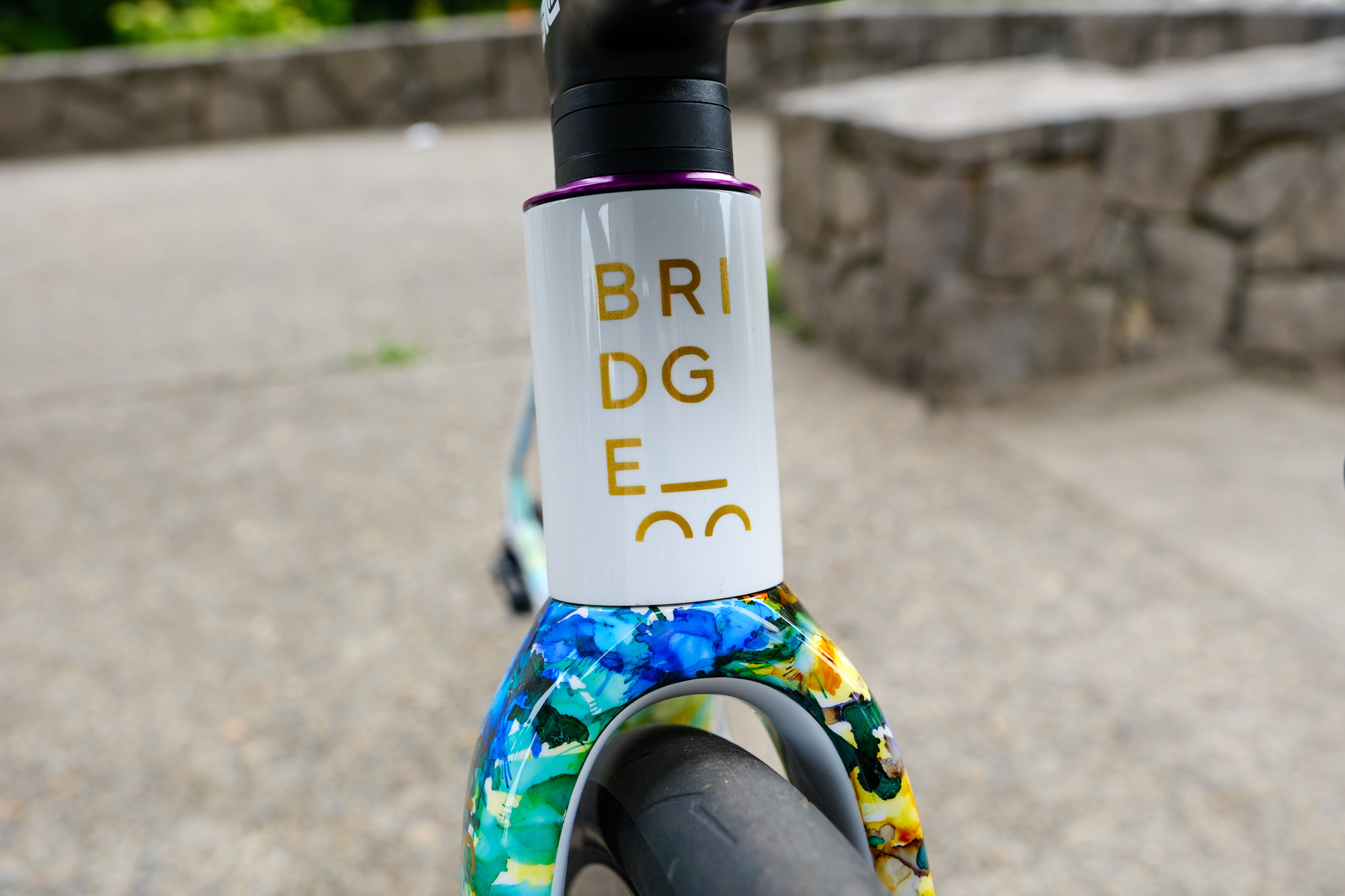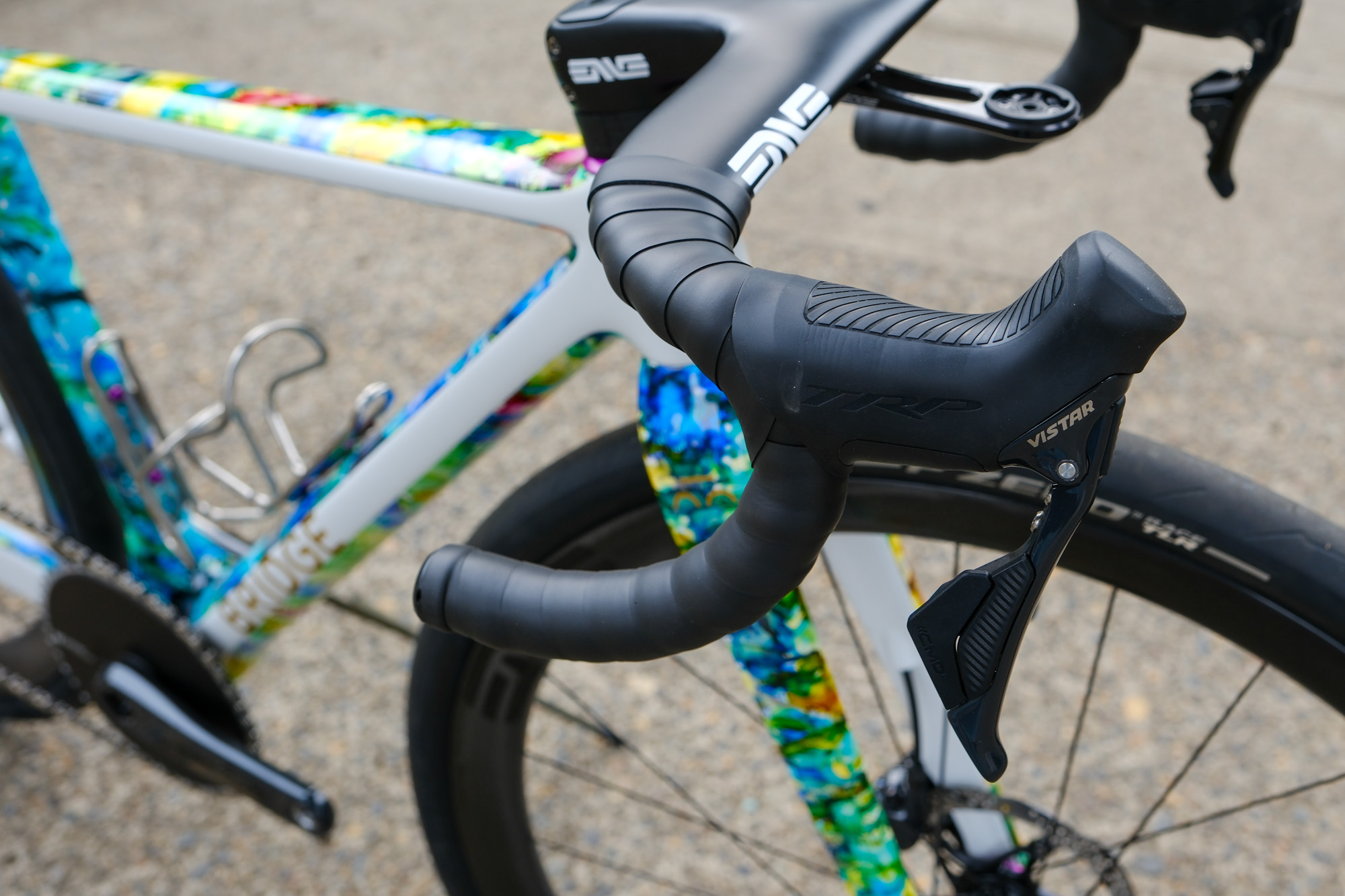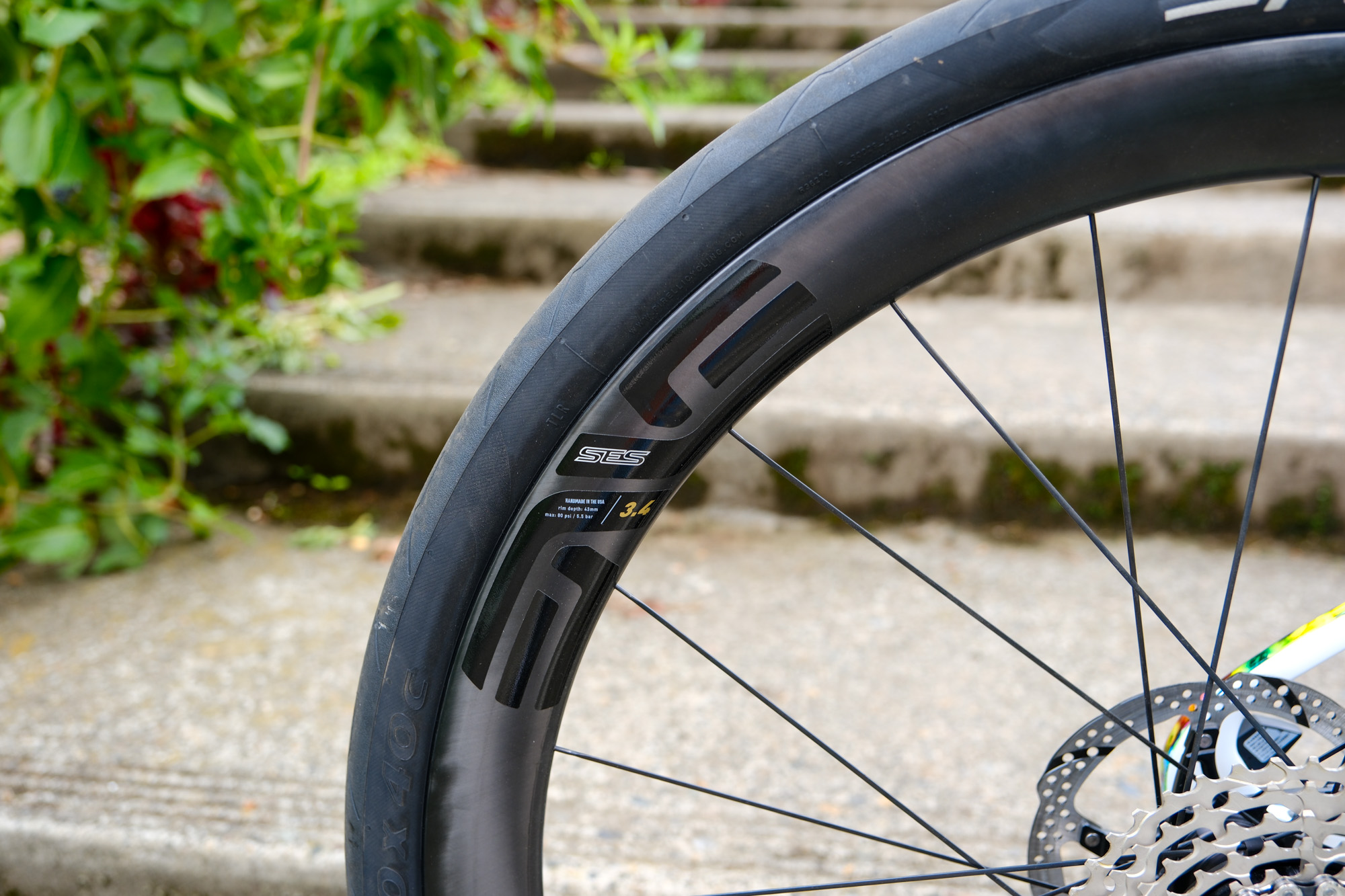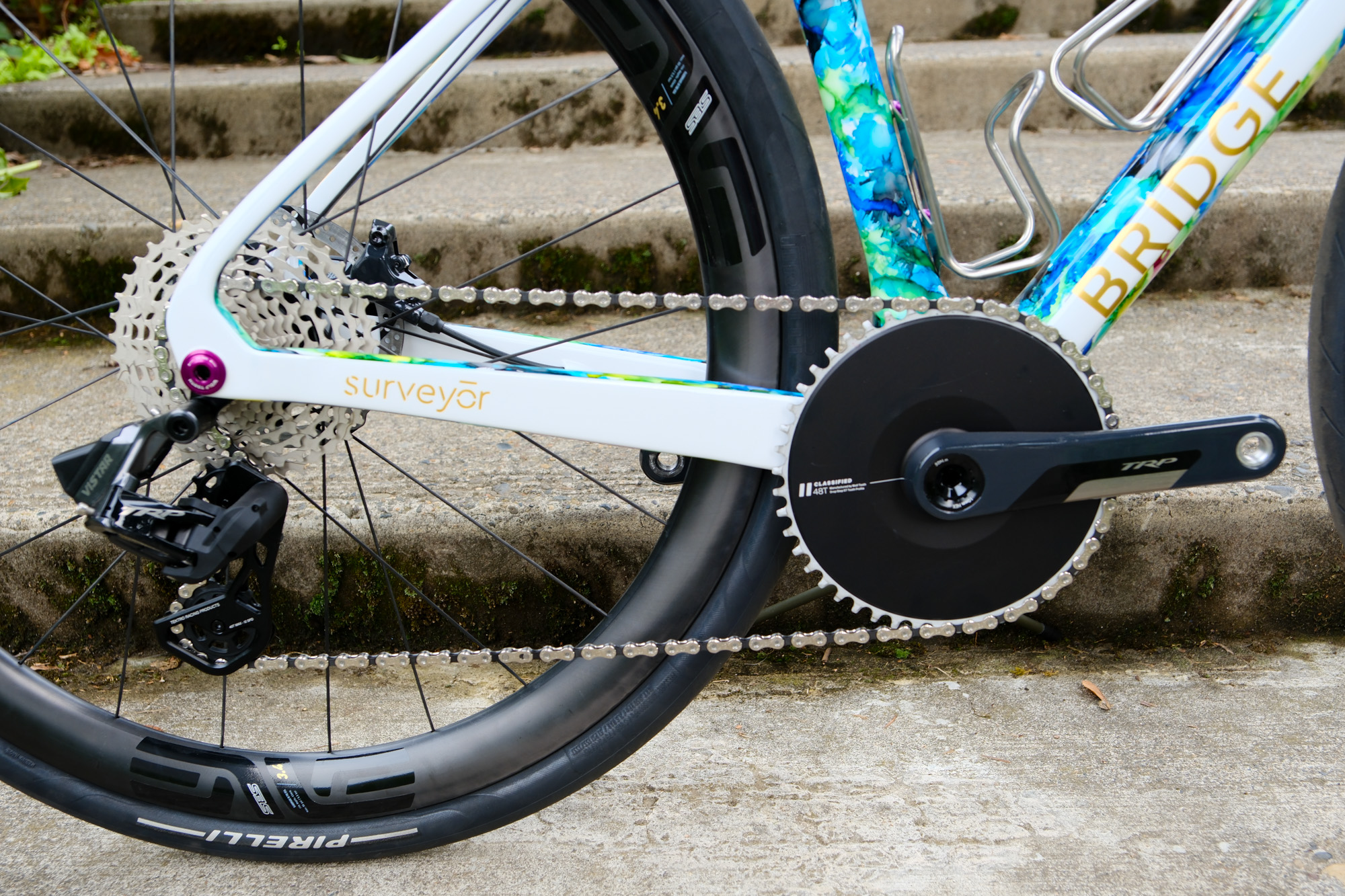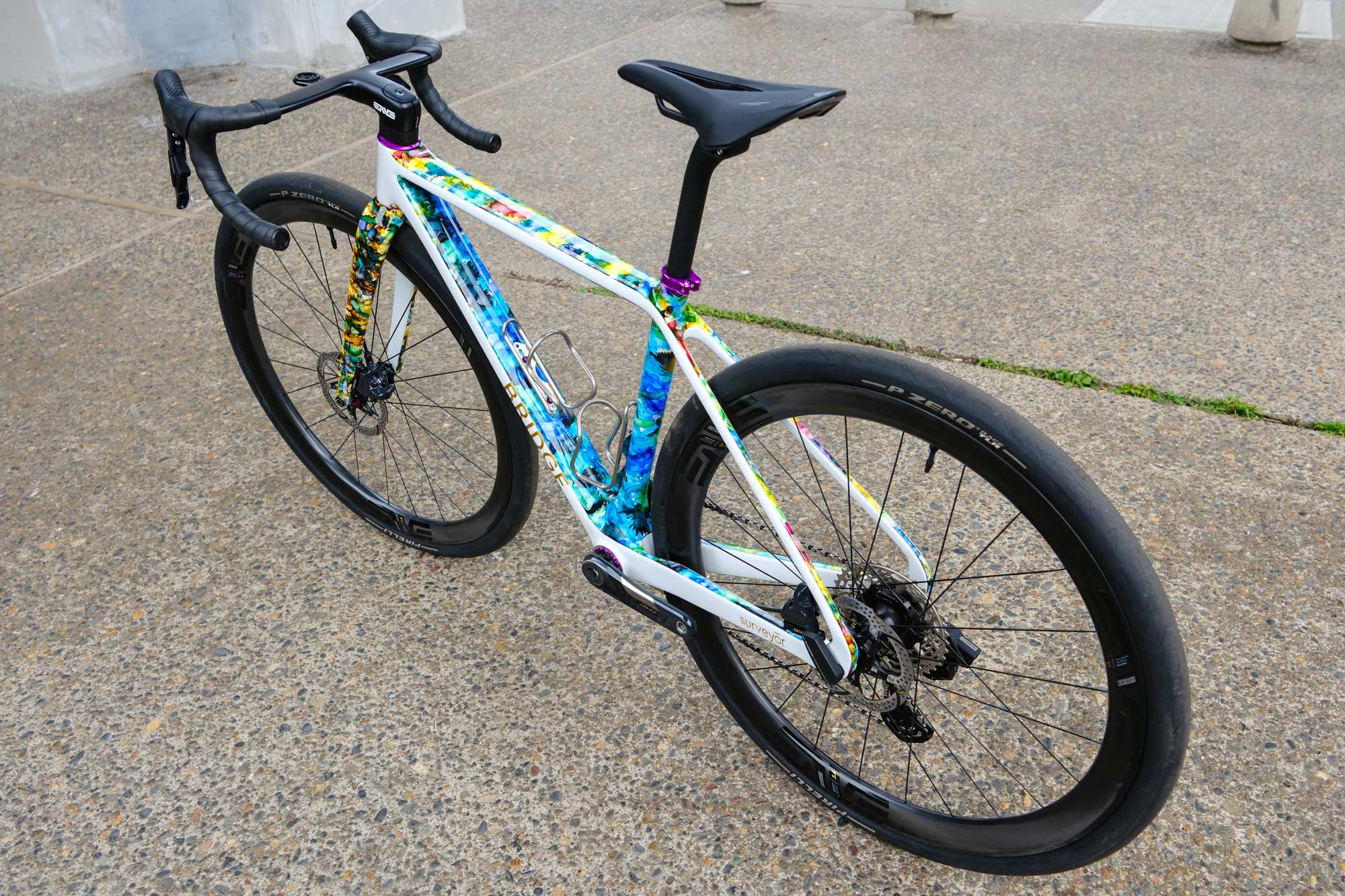I first spoke to Bridge Bike Works co-founder Michael Yakubowicz in November 2023. I’d already heard about his Canadian brand doing something intriguing up north, since handmade carbon bikes from Canada are a rarity. In fact, I can’t name a single well-known brand that still manufactures domestically.
At the time, Bridge was generating some buzz not only for being a Canadian-made carbon frame builder, but for doing it with a big-brand approach and debuting some intriguing innovations along the way.
(Image credit: Anne-Marije Rook)
This isn’t your typical “made-in-the-garage” passion project. From cutting their own tooling to hand-laying the carbon fibre and meticulously applying detailed paintwork, everything happens under one roof at the brand’s 8,200-square-foot facility in Toronto.
Perhaps most buzz-worthy is Bridge’s industry-first technology: the Integrally Threaded Carbon Bottom Bracket, where the threads for the bottom bracket shell are moulded directly into the carbon lay-up. No metal insert, no sleeve. The result? A lighter, stiffer, and supposedly creak-free system.
The buzz, the big brand facilities, and the innovative tech were all very impressive for a new company with just one bike model. Naturally, we were intrigued.
Yakubowicz suggested that the best way to understand the brand was to ride the product, and offered to build me a test bike in my size. I happily accepted. But between production tweaks, ISO testing, and the general whirlwind of starting a new bike company, it wasn’t until September 2025 that I finally swung a leg over a finished Surveyor.
Yakubowicz brought an exquisitely painted frame to the MADE bike show in Portland and let me hold onto it afterwards, encouraging me to ride it hard, on pavement and gravel, with knobbies and slicks, and everywhere this one-model, do-it-all bike was meant to go. I didn’t need to be told twice.
Meet the Surveyor
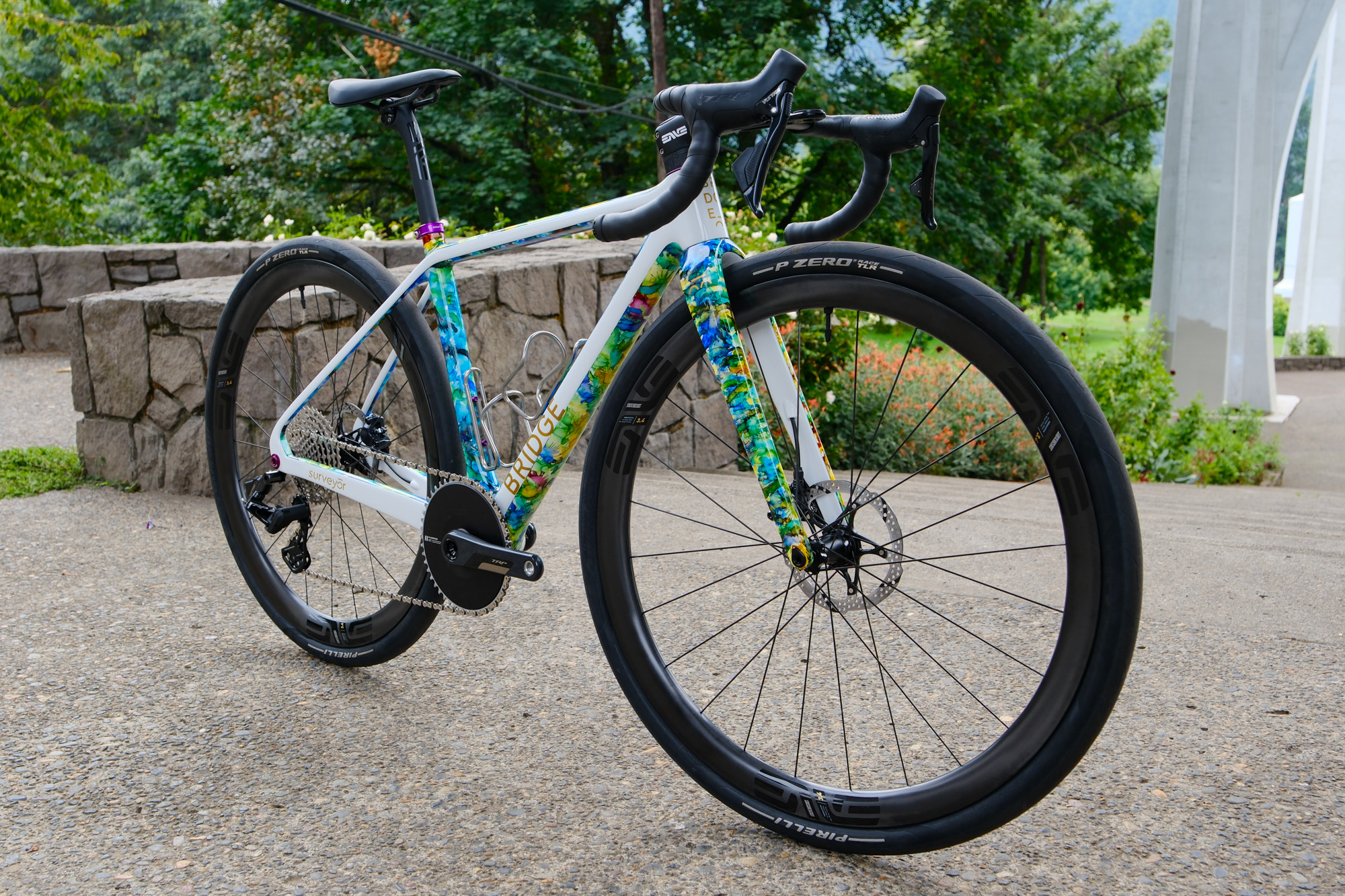
(Image credit: Anne-Marije Rook)
Five years since its founding, Bridge Bike Works still makes just the one model: the Surveyor. They call it the “n+1 destroyer. Not a hardcore gravel bike, not a dedicated crit racer, but incredible for everything in between. You could legitimately win a Grand Tour on a Surveyor, but you could also win Unbound on a Surveyor. That’s what we set out to accomplish.”
The Surveyor is available in five sizes, from 51 to 59 centimetres, and is built around a proprietary frame and fork that were designed together, not as separate projects, to deliver consistent performance on any surface.
It offers clearance for up to 40mm tyres, combining the weight and stiffness of a modern road bike with the versatility needed for mixed-surface riding. Handling is designed to be sharp, with a tight wheelbase and the same 417mm chainstay length across all sizes, paired with a lower bottom bracket drop and long top tube for added stability.
Notably, the Surveyor does not use dropped seatstays; its comfort instead comes from wider tyres and exposed seatpost flex. Cable routing is fully internal for 1x and 2x electronic groupsets, with external options available for mechanical drivetrains. Other practical features include a UDH hanger system, a 27.2mm round seatpost, a front-derailleur clamp, and a T47 bottom bracket.
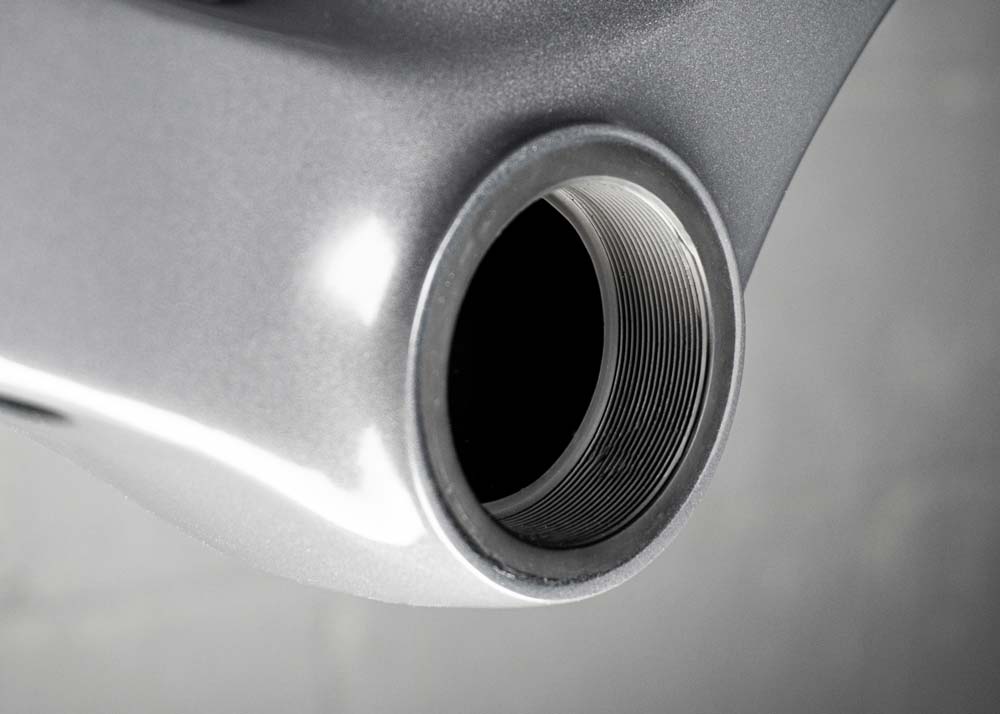
A unique feature: The Surveyor features an Integrally Threaded Carbon Bottom Bracket, where the threads for the bottom bracket shell are moulded directly into the carbon lay-up. No metal insert, no sleeve. The result? A lighter, stiffer, and supposedly creak-free system. During my time with the bike, the feature performed flawlessly.
(Image credit: Bridge Bike Works)
The Surveyor as tested
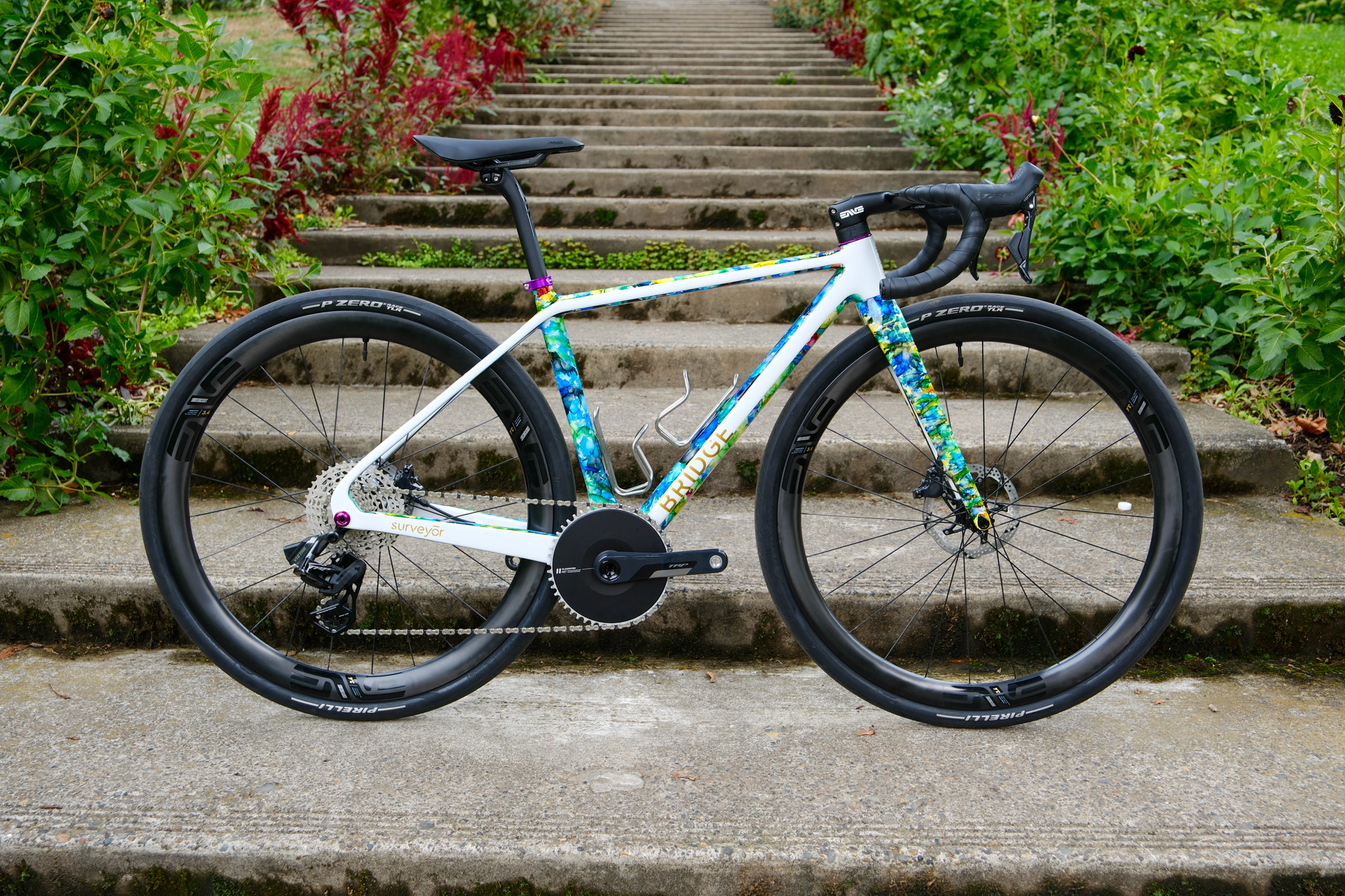
(Image credit: Anne-Marije Rook)
The Ride
The Surveyor is a downright stunner: sleek lines, fully hidden cables and truly exquisite paint. Bridge went all out for this show bike with a bright, hand-painted watercolour finish. I couldn’t stop glancing down at the top tube while riding, and by the end of my first week, I had at least a dozen photos of it on my phone. The vibrant paint, paired with the stealthy black Enve components, makes the bike outright showroom-worthy. I even kept it in my office instead of the garage, just so I could admire it throughout the day.
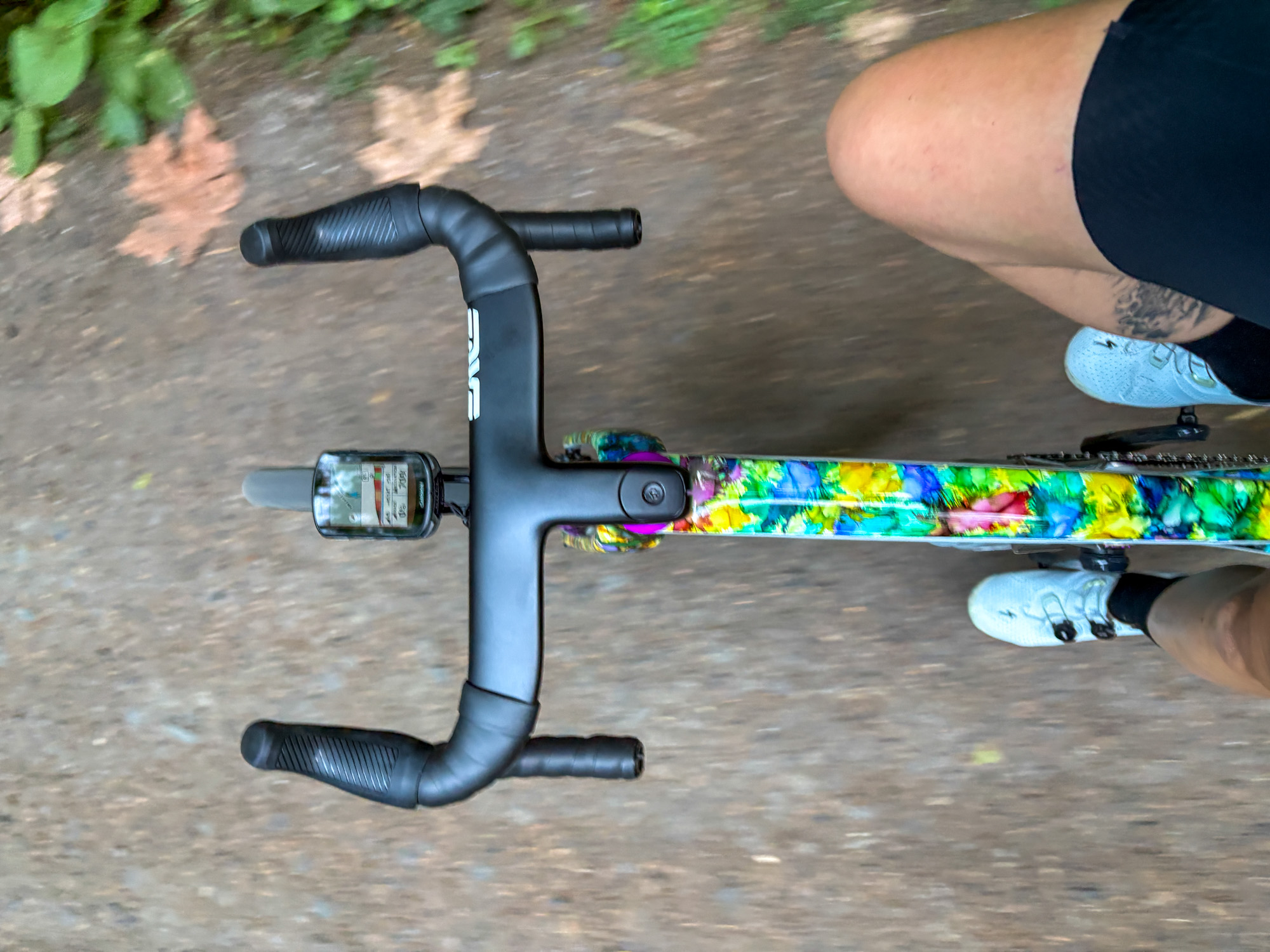
(Image credit: Anne-Marije Rook)
But once I started riding in earnest, my impressions were more complex.
The bike came to me in “gravel mode” with Pirelli’s 40mm slicks, and Yakubowicz’s encouragement to go get it dirty, which I certainly did. I also spent some rides in “road mode” with 32mm slicks for comparison, but most of my riding was done on gravel.
Now, All-Road bikes are, by nature, an exercise in compromise. And where you fall on the underbiking vs overbiking spectrum matters.
I tend to prefer the snappy, playful end of it. Think cyclocross bike: light, quick, and reactive. My friend calls them “frisbee bikes”: fast, agile, a little twitchy, and perhaps even a touch unstable. The kind that darts side to side and rewards short, punchy efforts.
At the other end of the spectrum are bikes that prioritise momentum, stability, maybe a hint of aerodynamics, and smooth, sustained speed. The sort that carries you for miles with composure and comfort.
The Surveyor sits more on that latter side than the former, but it took me a while to figure out its personality.
Bridge’s marketing copy describes the Surveyor as a bike equally capable of winning a Grand Tour or Unbound. A bike that was made to “play hard, ride hard, and push the limits of road and gravel.” “Not a hardcore gravel bike, not a dedicated crit racer, but incredible for everything in between.”
As a former road racer who loved crits and now spends most of her time on gravel, that sounded like music to my ears. I rode the Unbound XL on a featherweight S-Works Crux. Underbiking and playing bikes is my M.O. So I expected to fall instantly for the Surveyor. But it surprised me.
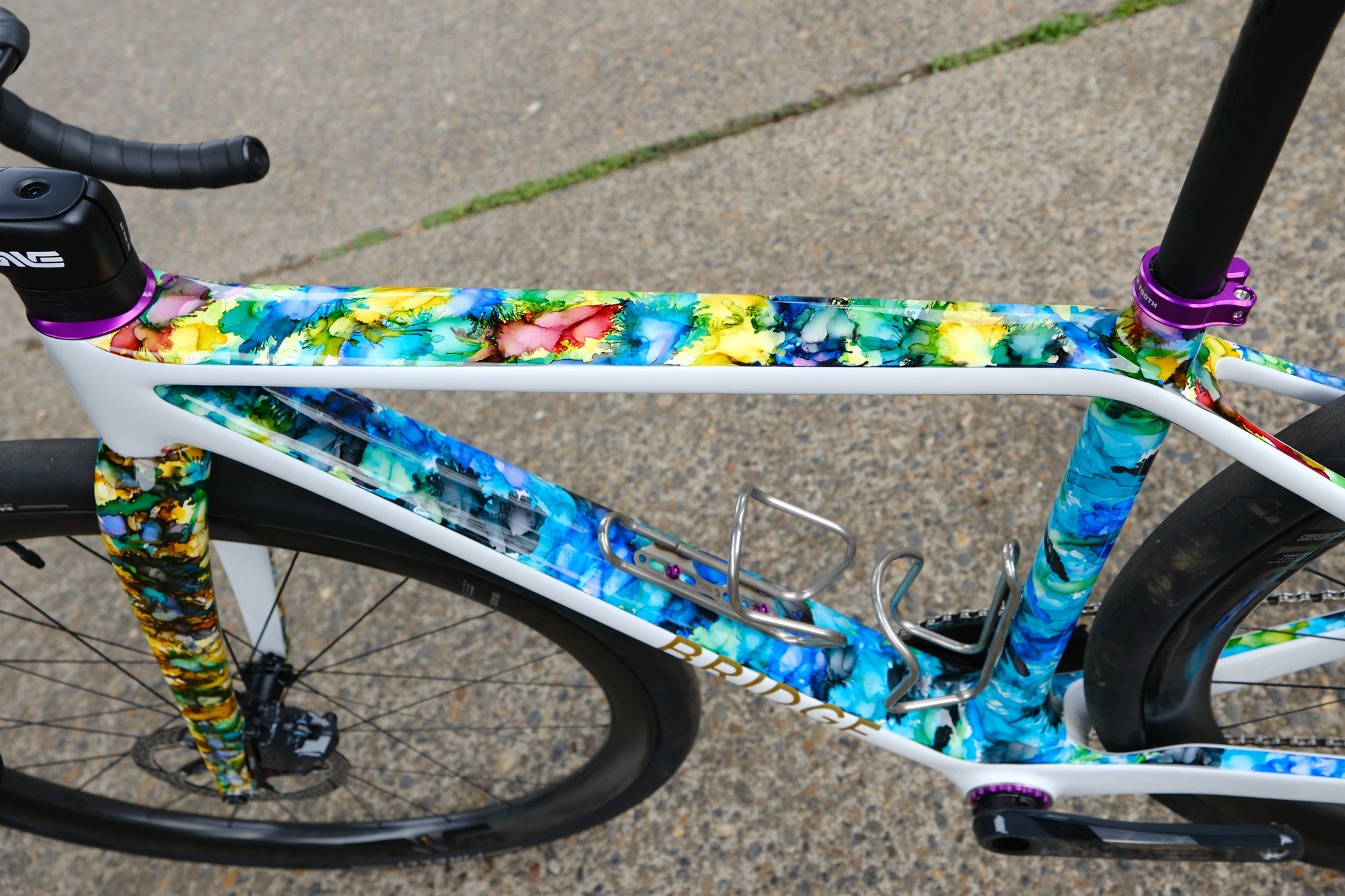
This is what a CA $3400 paintjob looks like
(Image credit: Anne-Marije Rook)
The geometry is undeniably racy, with a longish reach and a front end that, at 510mm stack, sits nearly two centimetres lower than my go-to gravel bike, putting me in a low, aggressive position. The wheelbase is shorter yet paired with a lower bottom bracket (80mm drop). A mix you don’t often see, though not necessarily a bad idea. It’s like marrying endurance-bike stability with cyclocross-bike handling. Interestingly, Bridge uses the same 417mm chainstay across all five sizes, meaning the bike will behave slightly differently depending on the rider’s height and resulting frame size. For a smaller rider like me, it adds a hint of extra stability; for taller riders, it might feel more compact and reactive under power.
Despite its racy geometry, it didn’t feel particularly racy. The overwhelming first impression was that of composure. The oversized tubing and 40mm slick tyres give it a solid, almost overbuilt character — again, amplified due to the small size. It carries speed well once you’re rolling and feels confident in smooth curves, but it doesn’t spring forward when you press on the pedals or punch up hills. It prioritises momentum and stability over instant acceleration. It’s not until you really put the hammer down that it comes alive. In that sense, it would indeed favour an Unbound-like course, except that 40mm tyres are far too narrow for most American gravel races.
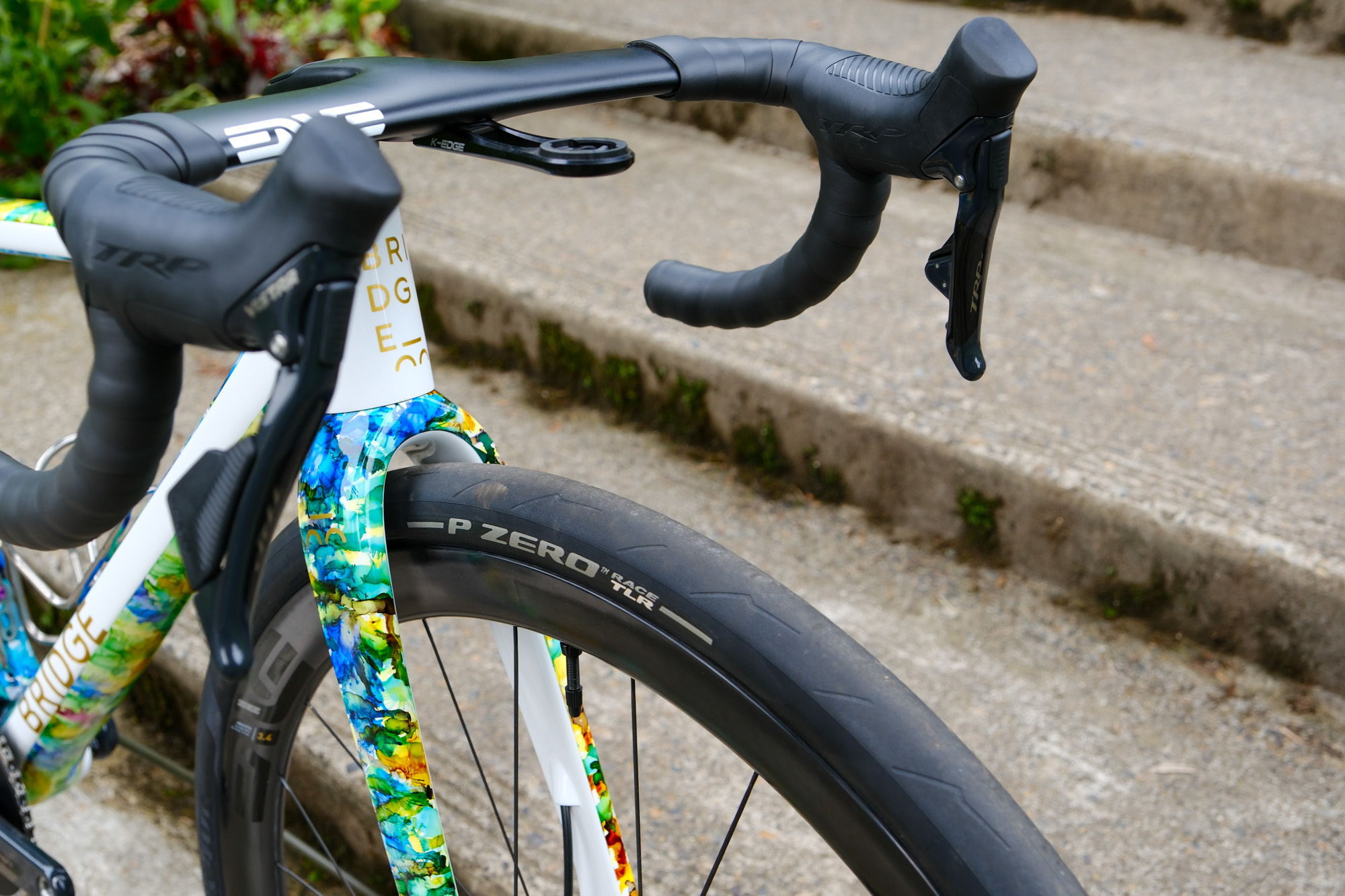
(Image credit: Anne-Marije Rook)
I couldn’t shake the feeling that something was holding it back. Switching to 32mm tyres did bring out more of its potential, making it faster to accelerate and more responsive overall. I’d say 32–35 mm tyres may be the Surveyor’s sweet spot, a range where it feels responsive, capable and perfectly content to devour endless miles of rough pavement and light gravel.
I’d venture that much of the Surveyor’s muted ride feel had to do with the build I received as well. My test bike tipped the scales at just over 19 lb (8.6 kg), which, for a small bike, is weightier than expected. For comparison, it’s about 1.8 pounds heavier than my custom titanium all-road from Hot Salad. The weight wasn’t coming from the carbon frame, ENVE cockpit or SES 3.4 wheels, but rather from the TRP Vistar / Classified system. The Classified rear hub alone weighs around 480 g, and when combined with the derailleur, shifters and brakes, the setup outweighs high-end 2× groupsets. I do quite like the feel of the Vistar hoods, the braking power and the shifting benefits of the Classified Powershift hub, but for smaller riders, especially, the extra mass dampens some of the bike’s personality.
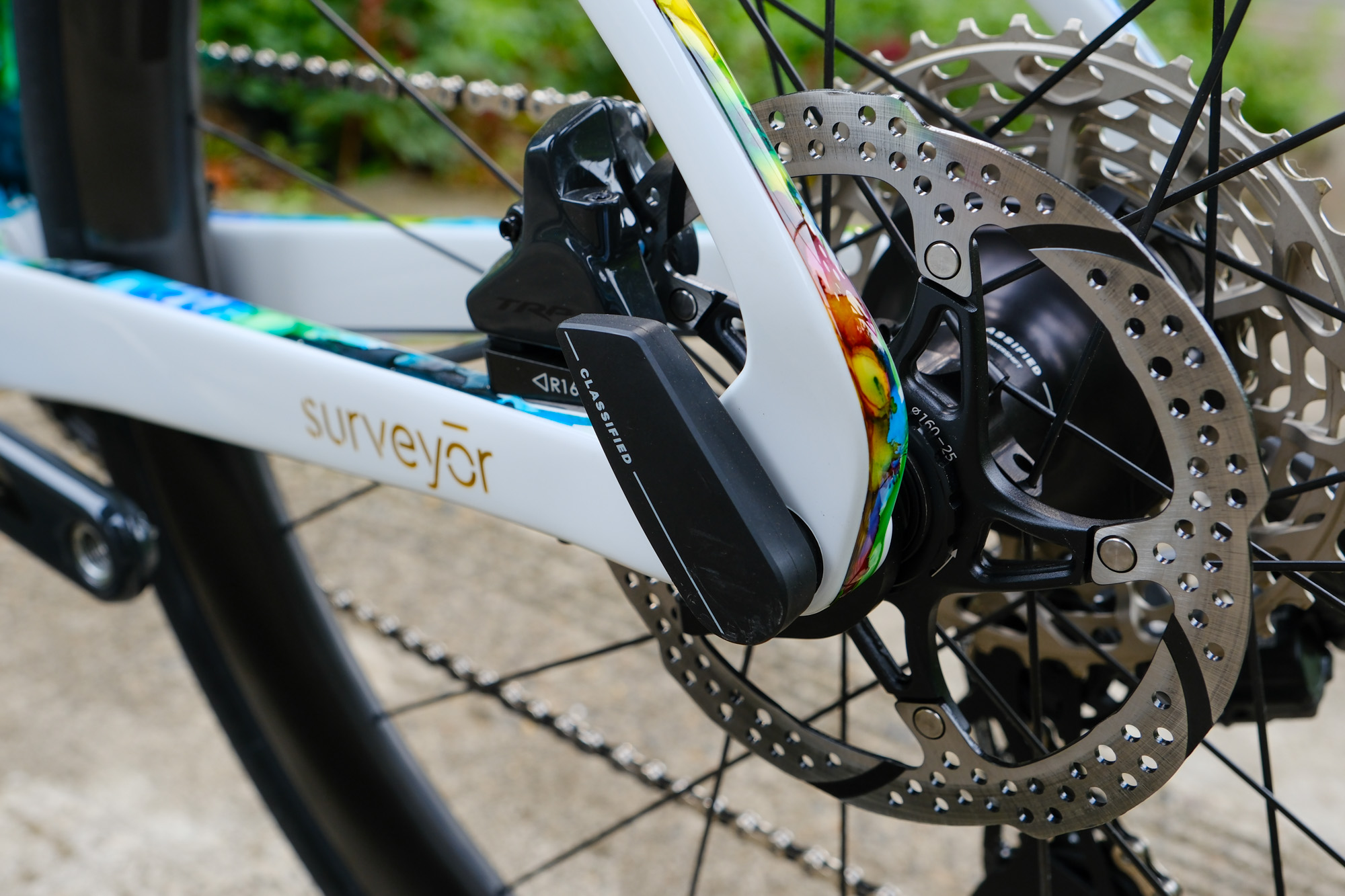
(Image credit: Anne-Marije Rook)
Overall, the Surveyor feels more grounded than lively, more composed than reactive. It rewards smooth, steady power and long, flowing efforts rather than short bursts and quick directional changes. In short, it’s a bike that feels happiest stretching its legs on wide open roads and fast gravel.
Value and Verdict
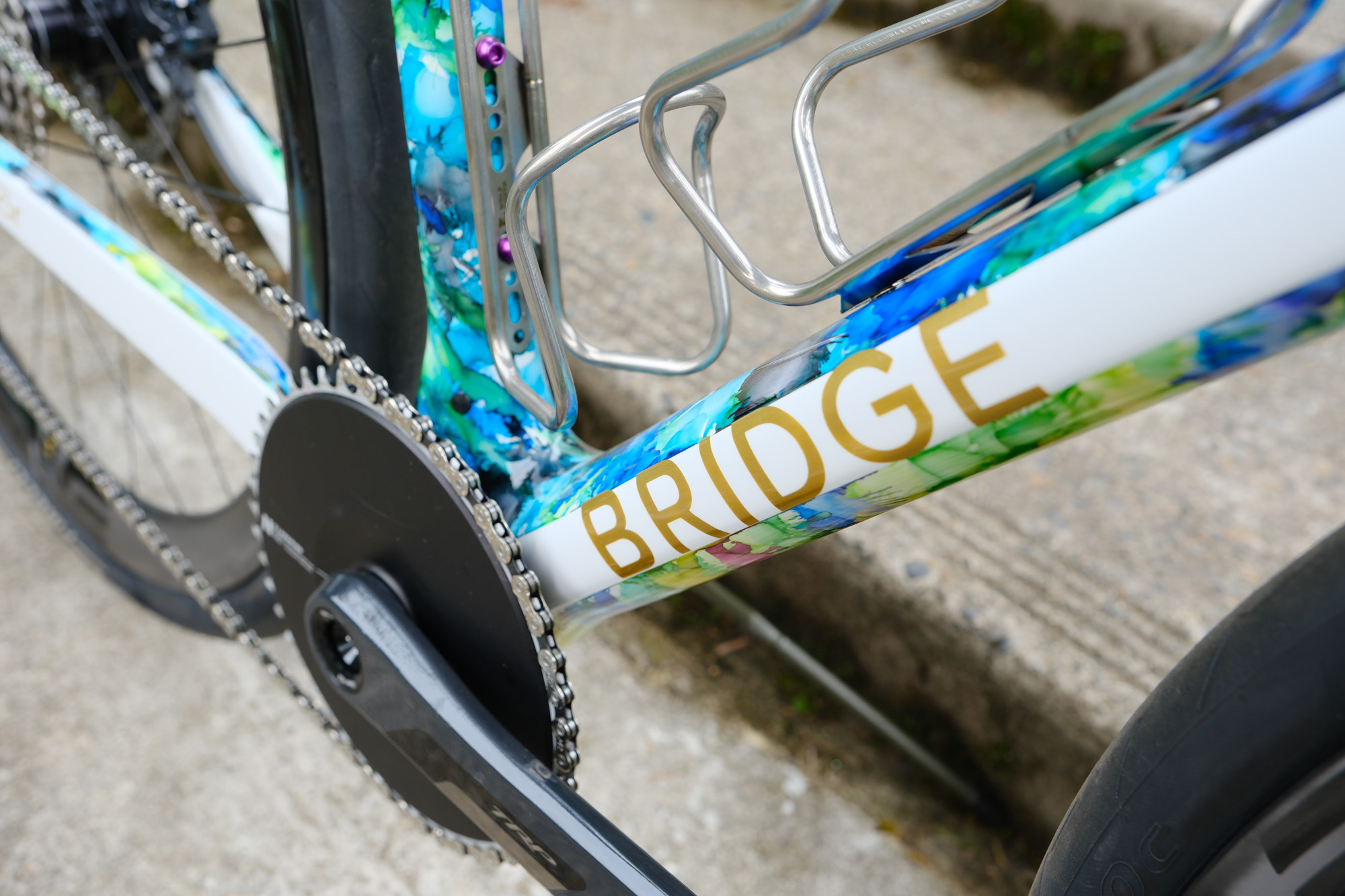
(Image credit: Anne-Marije Rook)
At US $13,635, the Surveyor sits squarely among the most premium all-road offerings from major brands. But none of those bikes are designed, engineered and built entirely in North America. That alone makes it stand out.
The only real comparison that comes to mind is Argonaut Cycles, based in Bend, Oregon, another boutique brand producing fully domestic carbon bikes. But even Argonaut’s stock-size models start at a significantly higher price point. In the realm of high-end, handmade bikes, the Bridge Bike Works is actually more attainable than most, especially the frameset option, which retails for US $4,645 / CA $6,500 / £3,485 and includes a Wolf Tooth headset, axles, UDH hanger and seat collar. For comparison, the mass-produced (Taiwan-made) Specialized S-Works Roubaix SL8 frameset sells for US $4,499.99.
For riders drawn to craftsmanship, originality and domestic production, there’s good value here. The Surveyor is a statement piece. A bike that rides with confidence, showcases rare craftsmanship and turns heads wherever it goes. It’s not the lightest or liveliest all-road bike I’ve ridden, but it’s certainly one of the more distinctive.
Buy if: you want to support handmade Canadian manufacturing, own a bike no one else on the group ride will have, and prefer a stable, composed ride across rough pavement and light gravel.
